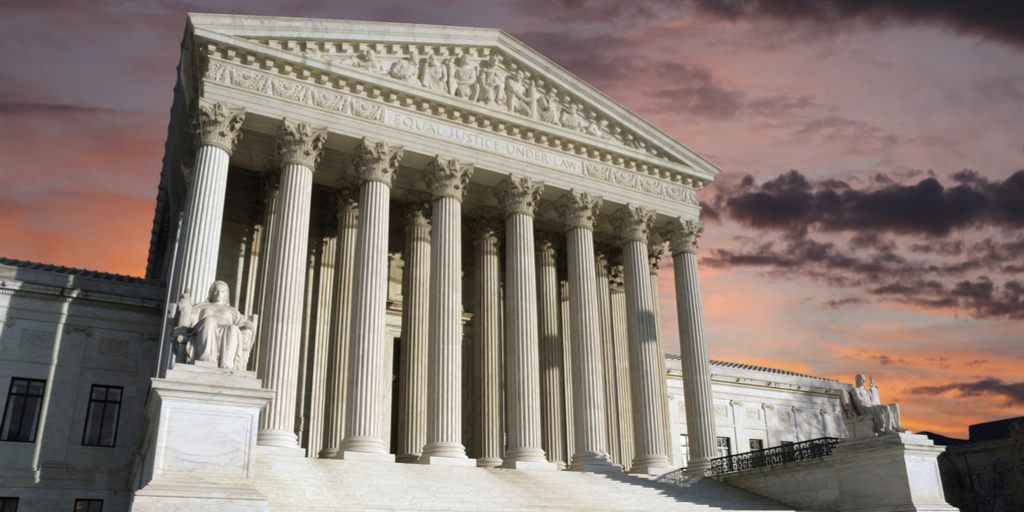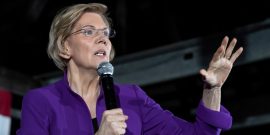A Failed Attempt to Silence
When Justice Sotomayor authors an opinion favoring the National Rifle Association, it gets attention. This happened in the case of the NRA v. Vullo, a unanimous opinion holding that a regulatory official engages in viewpoint discrimination against gun-rights advocates when it coerces their insurance companies to stop doing business with them. The case properly concluded that the First Amendment protects speakers against such coercion by government officials. Yet the Court did not adequately explain why it does so.
NRA v. Vullo is not your average government censorship case. For starters, it presents three wrinkles that could complicate the analysis.
First, the Court merely considered whether the NRA has a First Amendment claim based on statements of facts assumed to be true. The veracity of the allegations has yet to be tested at trial.
Second, the case is muddied by the fact that the NRA and its insurers had previously been found to have violated state insurance laws. But their previous wrongdoing doesn’t bear on the circumstances giving rise to their First Amendment claim.
Finally, the NRA was not directly subjected to government censorship. Instead, Maria Vullo, then-superintendent of the Department of Financial Services (DFS) for New York, targeted the NRA through insurance companies that her agency regulates.
According to the NRA’s pleadings, Vullo met privately with executives of Lloyd’s of London to pressure them to stop underwriting insurance policies for the NRA. She communicated her desire to limit firearms “including, specifically, by weakening the NRA.” Then she made a proposition. Lloyd’s could avoid liability for regulatory infractions if it supported her campaign against gun groups. A bargain was struck. Lloyd’s agreed to stop underwriting insurance for firearms-related policies. In exchange, DFS would direct its regulatory enforcement elsewhere, focusing on other insurers doing business with the NRA.
Some months later, Vullo sent “Guidance Letters” to insurance companies and financial services institutions, both regulated by the DFS, advising them to assess their reputational risks in doing business with the NRA and instructing them to “take prompt actions to manag[e] these risks and promote public health and safety.”
The District Court found these facts, taken together, amount to a “veiled threat” to disassociate with the NRA or else face regulatory consequences. Yet on appeal, the Second Circuit characterized Vullo as engaging in permissible government speech and legitimate law enforcement. Not surprisingly, the Supreme Court disagreed with the Second Circuit.
Justice Sotomayor properly characterized Vullo’s conduct as smacking of viewpoint discrimination, noting, “At the heart of the First Amendment’s Free Speech Clause is the recognition that viewpoint discrimination is uniquely harmful to a free and democratic society.” She recognized that regulatory officials often do and should have viewpoints about pressing social and political matters, which they are at liberty to communicate. But in this case, a line had been crossed: “What she cannot do, however, is use the power of the state to punish or suppress disfavored expression.”
But how is this line between licit government speech and illicit suppression or punishment to be drawn when a government official approaches an intermediary to hurt its target? Justice Sotomayor followed the lead of the Solicitor General’s argument in their amicus brief and looked to Bantam Books v. Sullivan for its analytical framework.
As Bantam Books is central to the Court’s analysis, it merits an explanation. In that case, circa 1963, a Commission was appointed to educate the public about books that might corrupt youth. The Commission wrote to book distributors, who operated as intermediaries for publishing companies, to let them know when a book was objectionable. It also notified these book distributors of the Commission’s intention to share its list of potentially obscene books with the state Attorney General and local police departments. Some publishing companies, including Bantam Books, sued to stop the Commission from interfering with these intermediaries, claiming that the Commission’s actions violated the First Amendment.
Bantam Books superficially resembles NRA v. Vullo in that both involve government coercion of an intermediary in a First Amendment case brought by another affected speaker. Justice Sotomayor reasonably concluded that the big takeaway from this precedent was, “Ultimately, Bantam Books stands for the principle that a government official cannot do indirectly what she cannot do directly: A government official cannot coerce a private party to punish or suppress disfavored speech on her behalf.”
Yet the Court then, unhelpfully, focused upon specific factors drawn from Bantam Books to judge when a third party has been coerced. It noted that the Second Circuit had extracted from it a four-factor test for third-party coercion, including “(1) word choice and tone; (2) the existence of regulatory authority; (3) whether the speech was perceived as a threat; and, perhaps most importantly, (4) whether the speech refers to adverse consequences.”
The Court clarified that such a multifactor test was “a useful, though nonexhaustive, guide.” Justice Gorsuch echoed this point in his short concurrence. Yet Justice Sotomayor then applied most of these factors to determine whether Vullo’s interaction with Lloyd’s was coercive.
Weaken the speaker and you weaken the speech. Isolate the speaker, and you may eventually take away the desire to speak.
First, the Court reasoned that Vullo had authority over the insurance industry and her authority was even greater than the Commission’s in Bantam Books. Not only could she investigate and refer cases for prosecution, but she could also bring notice of civil charges and enter into consent decrees with significant monetary penalties.
Second, her speech would reasonably be perceived as a threat when considered in the context of the private meeting with Lloyd’s. There, Vullo raised technical violations that her office could pursue with the Lloyd’s executive. But she conveyed that she would be “less interested in pursuing the[se] infractions … so long as Lloyd’s ceased providing insurance to gun groups, especially the NRA.”
Third, her speech was, in fact, perceived as a threat by Lloyd’s executives. Lloyd’s took steps to distance itself from the NRA. Moreover, internal communication within the company suggested that it perceived that “the gun issue” had risen to the level of a compliance problem.
Finally, the suggestion that adverse consequences would follow in doing business with the NRA was reinforced by additional government actions, including a subsequent Guideline Letter sent to insurance companies and financial services institutions encouraging them to sever their ties with the NRA to manage their reputational risks.
In plodding through a multifactor checklist to assess whether insurance intermediaries had been coerced, the Court arguably lost the plot of why this drama matters to the First Amendment. Moreover, by trying to fit NRA v. Vullo into the mold of Bantam Books, it overlooked the respects in which NRA v. Vullo is more pernicious to free speech.
Consider these differences.
First, Vullo’s most egregious threats were carried out in private, while the Commission in Bantam Books wrote letters, shared with police officers, that made them a matter of public record. As the First Amendment Scholars (FAS) argue in their amicus brief: “Government officials cannot circumvent the First Amendment by waging a public campaign against a disfavored speaker while saving their most potent weapon—the threat of legal sanctions—for the back room.”
Such private threats make it harder for a disfavored speaker to find out what was said, which makes it harder for them to prove a First Amendment claim. This lack of transparency also increases the likelihood that the speaker will never know they are the target of a government campaign to punish or suppress their disfavored speech. For this reason, FAS properly concludes that “threatening business from behind closed doors is an especially dangerous tool for suppressing speech.”
Second, Vullo had no independent regulatory authority over the NRA. Her authority extended to insurance companies and financial services institutions only. On the other hand, the Commission had ostensible authority over published books. The Commission targeted book distributors, but it could have sent its letters to publishers directly. Vullo, on the other hand, was targeting an advocacy group outside of her wheelhouse.
As FAS notes, this difference raises at least two First Amendment concerns. First, it leads to an expansion of indirect regulatory power over speech: “By targeting intermediaries, government officials can expand their regulatory jurisdiction to suppress the speech of organizations that they have no control over.” Second, an intermediary is more likely to disassociate from a disfavored speaker when they don’t share common regulatory concerns. As FAS contends, “intermediaries will often be less invested in the speaker’s message,” and hence more likely to cave to coercion.
There is this final, and little-mentioned, difference between Bantam Books and NRA v. Vullo. In Bantam Books, the Commission did not seek to sever the relationship between book distributors and publishers. Its modest objective was to limit the circulation of specific books it found to be objectionable. In NRA v. Vullo, Vullo set out to destroy a lawful business relationship between the NRA and Lloyd’s through coercive means. Her intention to blacklist the NRA within the entire insurance industry operating in New York might be inferred from the Guidelines warning insurance companies against associating with the NRA.
This is perhaps the most chilling of the First Amendment concerns. Not only was she attempting to suppress or punish a speaker, but she did so in a manner that was potentially devastating to the ability of the speaker to operate effectively. She used her power to end a lawful relationship to weaken, and perhaps to isolate the NRA. Vullo undermined the NRA’s freedom of speech by attacking their freedom of association.
Attempts by government officials to sever lawful relationships bring to mind Hannah Arendt’s observations in the concluding chapter of her book, The Origins of Totalitarianism. Reflecting upon the similarities between tyrannies and totalitarian governments, she writes: “One of the primary aims of tyrannical government is to bring isolation about.” The purpose of isolation is to weaken the governed because “isolated men are powerless by definition.” Of course, isolating speakers alone does not constitute totalitarianism. But: “isolation is … pretotalitarian; its hallmark is impotence insofar as power always comes from men acting together.”
Weaken the speaker and you weaken the speech. Isolate the speaker, and you may eventually take away the desire to speak.
Thankfully, the First Amendment is a bulwark against government attempts to isolate speakers. The precedential value of NRA v. Vullo is strengthened by being a unanimous decision, written by a justice who is not inclined to otherwise look favorably upon gun rights. While parts of its reasoning may miss the plot, the case still makes clear that Americans stand united in condemning governmental efforts to “press men against each other” as a means of suppressing speech.


